Make it work with a potting bench – by Diane Morey Sitton
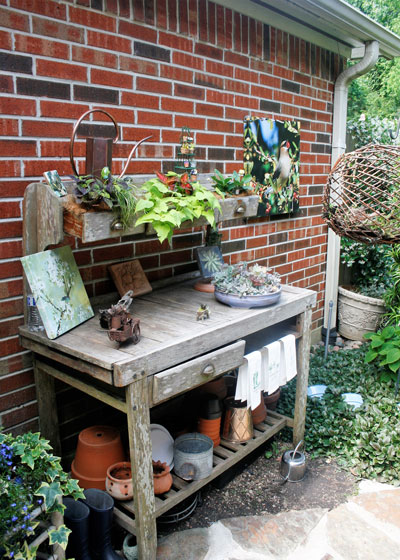
Potting benches can be as simple as a table pushed against an exterior wall or as grandiose as a repurposed sideboard, painted and outfitted with a tile countertop, sink and garden collectibles.
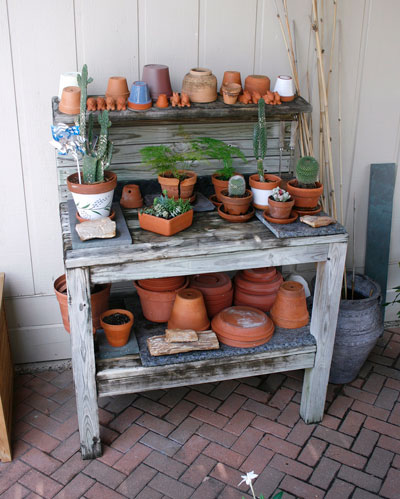
Despite their individuality, most potting benches feature a countertop for potting plants, transplanting seedlings and performing other garden-related tasks; sturdy shelves for storing pots and saucers; and hooks for hanging everything from hand tools to garden hats. Typically, in the space underneath, gardeners stash bins and boxes filled with potting soil, mulch and the makings of compost.
Building boom
For do-it-yourselfers, potting bench kits are available at nurseries and home improvement centers. Websites offer free potting bench plans. Generally, assembling a kit or building a simple potting bench requires a weekend or less.
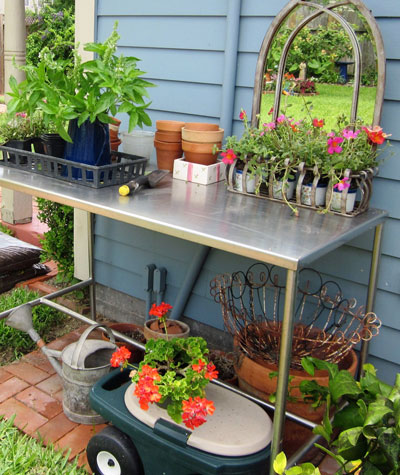
But if creativity is your thing, there’s no end to the materials that can be used to construct a one-of-a-kind potting station. For instance, you can build a budget-friendly base by reclaiming the lumber from wood pallets. Add a lattice backsplash. Or, stick to your budget by placing a heavy wood door on sawhorses. Concoct a place to hang tools by “framing” hardware cloth in a large wood frame and attaching it to the wall behind the work station. Better yet, obtain a flea market table, and then place a discarded bookcase on top of the table for storage. Another option—upgrade an old sofa table; they are a convenient height for potting. Arrange baskets or plastic bins underneath for storage.
Job site
Position the bench in an accessible location away from the garden’s traffic flow, but close to a water source. A side yard between a garage and fence is an ideal location. Prepare the site by constructing a floor using pavers, reclaimed bricks, flagstones, or gravel. Besides keeping table legs from sinking in soft ground and from absorbing moisture from wet soil, floors insure that the bench is level.
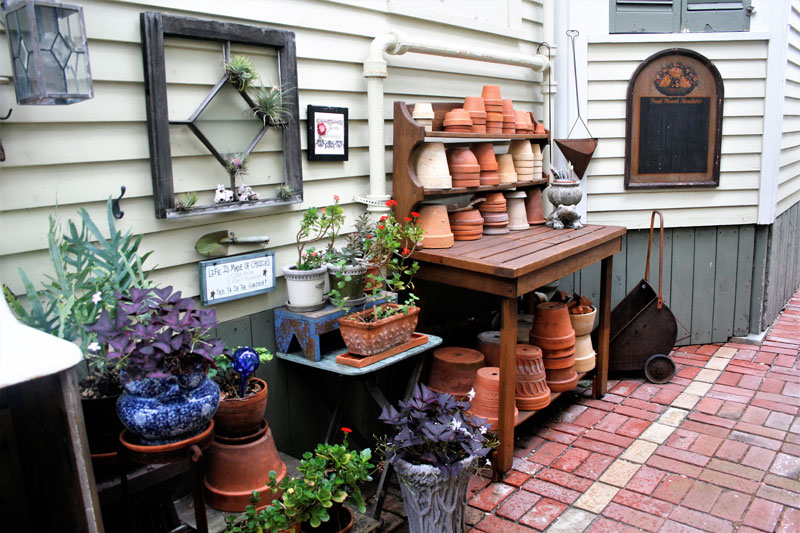
Feature that!
Potting benches have the potential to be multi-functional workstations. The list below includes features that add usefulness:
• A sink with running water.
• Shelves above the countertop for holding markers, plant tabs, twine and other supplies.
• Shelves or a closed cabinet below the countertop for storage.
• Pegboard, galvanized wire mesh or lattice attached between the countertop and the shelf above it equipped with S-hooks for hanging hand tools and other necessities.
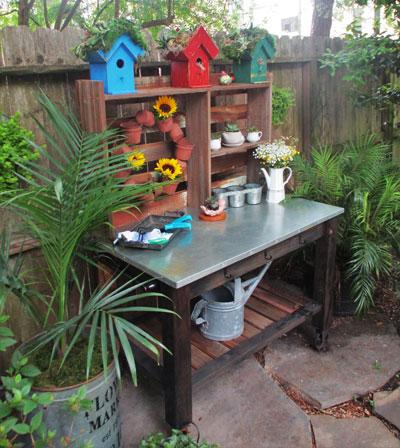
Useful accessories include: plastic trash containers with lids, galvanized tubs for composting, buckets and a watering can.
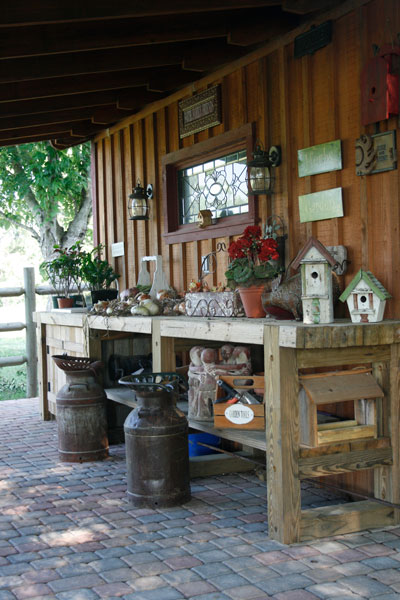
Whether large or small, plain or fancy, potting benches help tidy up landscapes by providing a space where gardeners can organize all things “garden.” The extra storage they provide saves time and steps. What’s more, they can be a garden highlight, a focal point of self-expression and individuality.
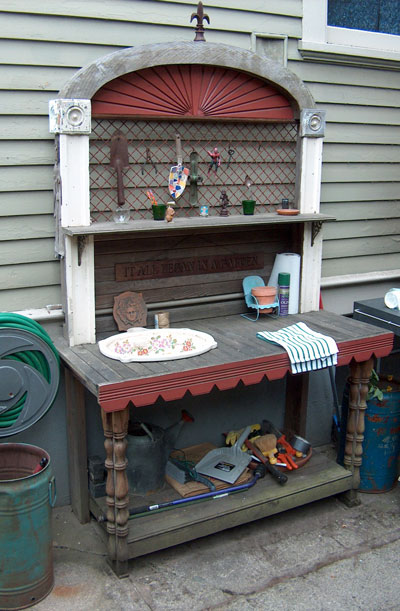
Is it any wonder that working at the potting bench is nearly as gratifying as strolling through the garden itself!
